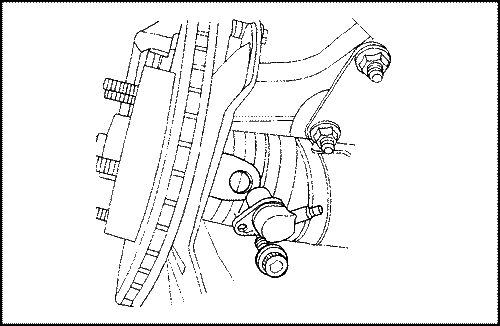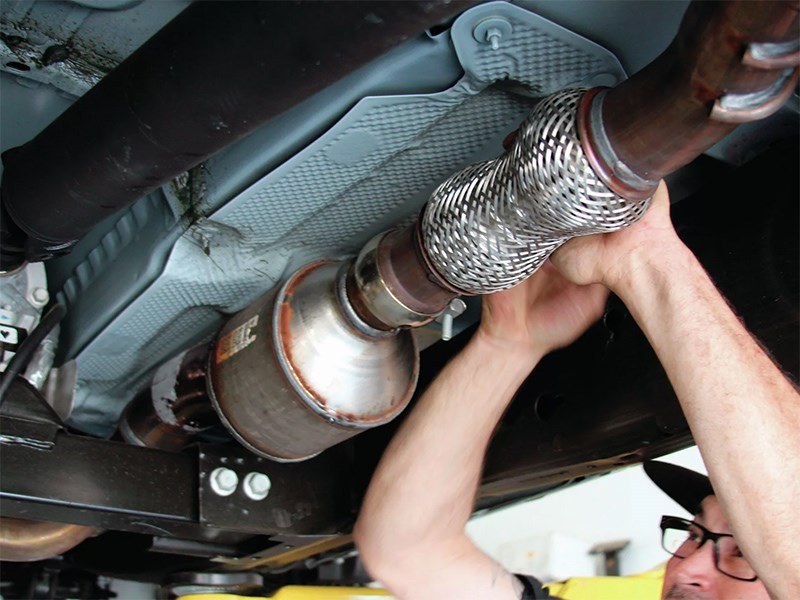
How to replace the ABS speed sensor
Content
Most modern cars are equipped with an anti-lock braking system (ABS). This system consists of valves, a controller and a speed sensor, which together provide safe braking.
The ABS speed sensor monitors the direction of rotation of the tires and ensures that the ABS system is activated if any difference or slip occurs between the wheels. If this sensor detects a difference, it sends a message to the controller telling it to turn on the ABS and overrides your manual braking.
ABS speed sensors are most commonly found on the wheels of most modern vehicles. This is the most efficient place to install them. On some older vehicles, particularly trucks with solid axles, they are mounted on the rear differential. The ABS speed sensor is simply a magnetic sensor that induces a voltage when the notches or protrusions of the sonic ring pass through the sensor's magnetic field. Sensors of this type are used in many different systems in a modern car. Anything that rotates can be fitted with this type of sensor so that the powertrain control module (PCM) can monitor its rotation.
If the ABS speed sensor has failed or is not working properly, you can replace it yourself.
Part 1 of 5: Find the right ABS sensor
Necessary materials
- Brake cleaner
- socket
- Jack stands
- multimeter
- ratchet
- Sandpaper
- Spray penetrant
- Seal Glide
- Sweep tool
- Socket set
- Set of wrenches
Step 1: Determine Which Sensor Is Faulty. Use a scanner and read the code to determine which sensor is faulty. If the code is not displayed, you will need to monitor the sensor data with a scanner while driving. If this is not possible, you will need to test each of the sensors one by one.
- FunctionsA: It is usually not necessary to test each sensor. This is normally required for early pre-OBD II systems, but is not required for later vehicle models.
Step 2: Find the sensor. The location of the sensor on the vehicle can be a problem for some vehicles and you may need to refer to the specific repair manual for your vehicle. Most often, the ABS speed sensor is mounted on the wheel or on the axle.
Step 3: Check each sensor to determine which one is bad.. You can skip this step if other methods have been successful.
Refer to your specific vehicle repair manual to determine the specifications for your vehicle's speed sensors.
Part 2 of 5: Remove the speed sensor
Step 1: Access the sensor. Often you will need to remove a wheel or bracket to gain access to the sensor. It depends on the vehicle and the sensor you are replacing.
Step 2 Remove the sensor. Once you have gained access to the sensor, disconnect the connector and remove the single bolt that secures the sensor.
- Functions: When removing the sensor from its mount or housing, you may need to apply a small amount of penetrant. After you have applied the penetrant, rotate the probe to release it. Be gentle and patient. As soon as it begins to rotate, slowly and strongly pull the sensor up. Often a flathead screwdriver can be used to lift.
Step 3: Pay Attention to Sensor Wire Routing. Make sure you write down the correct sensor wire path as it is critical that the sensor wire is routed correctly. Failure to do so will result in wiring damage and failed repairs.
Part 3 of 5: Clean sensor mounting hole and tone ring
Step 1: Clean the sensor mounting hole. Before installing the sensor, be sure to use sandpaper and brake cleaner to clean the sensor mounting hole.
Step 2: Clean off any thin metal from the tone ring.. The ribs on the tone ring often pick up fine metal present in the dirt. Be sure to remove all that fine metal.
Part 4 of 5: Install the sensor
Step 1: Prepare to Install the Sensor. Apply some Sil-Glyde to the sensor O-ring before installing the sensor.
- Functions: The o-ring will most likely break and be difficult to install unless some kind of lubricant is applied to it. Sil-Glyde is recommended as the first choice, but other lubricants can be used. Just make sure you use a rubber compatible lubricant. Some lubricants damage rubber, and if you use them, the rubber o-ring will expand and become unusable.
Step 2 Insert the sensor into the mounting hole.. Be sure to insert the ABS speed sensor with torque. If you've cleaned the mounting hole, it should slide in easily.
- Functions: Do not apply force to the sensor if it is not easy to insert. If the sensor does not install easily, compare the old ABS speed sensor with the new one to see what is wrong.
Step 3 Route the sensor wire in the correct path.. Make sure the wire is fixed in the correct way. If this is not done, the wire will probably be damaged and you will have to start over with a new sensor.
Step 4: Connect the sensor connector to the vehicle connector.. Be sure to listen for an audible click, indicating that the connector is locked into place. If you don't hear a click, try disconnecting the connector without opening the lock mechanism. If you can't take it apart, then it's secured correctly.
- Functions: Be sure to check the electrical connection inside the connector on both the vehicle side and the sensor side. Typically, such contacts are inserted when installing the connector. If you suspect this may be the case, you will need to unplug the connector to inspect the small pins.
Part 5 of 5: Clean up the code and test your car
Step 1. Clean up the code. Plug in the scanner and clear the code. After removing the code, navigate to the data for the sensor you just replaced.
Step 2: Test drive the car. Take the car for a test drive at speeds above 35 mph.
Monitor the data to make sure the sensor is sending the correct information to the powertrain control module (PCM).
Make sure you are safe while driving and monitoring data. Ideally, it's best to ask an assistant to look after the data for you.
It's very common to accidentally replace the wrong sensor, especially when you're working on a vehicle with sensors on each wheel. To make sure you've replaced the correct sensor, use a multimeter to test the sensor you suspect is bad before removing it.
If you need help with this process, contact an AvtoTachki certified technician to replace your ABS speed sensor. Have them do a thorough inspection if the ABS light is still on.
